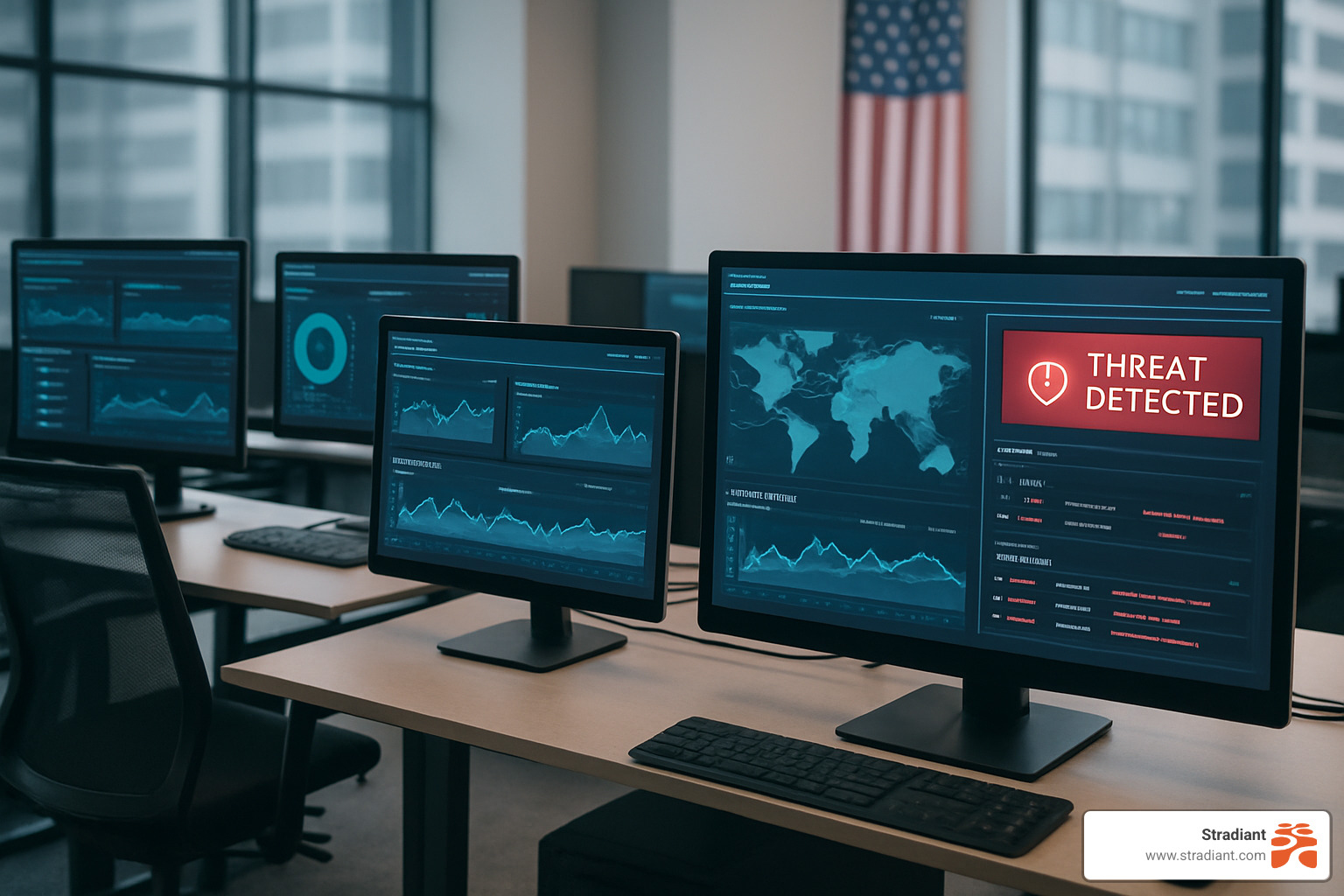The Health Insurance Portability and Accountability Act (HIPAA) is a critical regulatory framework that governs the management of protected health information (PHI) in legal practices. Compliance with HIPAA is essential for legal professionals who handle sensitive health data, as it ensures the confidentiality, integrity, and availability of this information.
Below, we’ll provide a comprehensive compliance checklist tailored for law firms aiming to meet HIPAA requirements effectively.
Understanding HIPAA and Its Applicability to Legal Practices
HIPAA is a critical piece of legislation designed to protect patient privacy and secure personal health information. Its primary objectives include:
- Ensuring the confidentiality and security of PHI
- Establishing standards for electronic health transactions
- Facilitating the portability of health insurance coverage
Under HIPAA, certain organizations are classified as covered entities. These include:
- Healthcare providers who transmit any health information in electronic form
- Health plans, including insurance companies and government programs
- Healthcare clearinghouses that process health data
Legal professionals frequently serve as business associates within this framework. When law firms handle or access PHI on behalf of a covered entity, they assume vital responsibilities under HIPAA regulations. This role entails adhering to stringent guidelines for safeguarding PHI, ensuring compliance with the Privacy Rule, Security Rule, and other associated regulations.
Lawyers must understand their obligations in handling PHI responsibly, as non-compliance can lead to severe penalties and reputational harm. Awareness of these roles enables legal practices to navigate their responsibilities effectively while protecting sensitive client information.
Key Components of HIPAA Regulations
HIPAA comprises four main rules, each serving a critical role in protecting patient information:
- Privacy Rule: Establishes standards for the protection of individuals’ medical records and personal health information. This rule governs the permissible uses and disclosures of PHI, ensuring that patient consent is obtained before sharing sensitive data.
- Security Rule: Focuses on safeguarding electronic protected health information (ePHI). It mandates the implementation of administrative, physical, and technical safeguards to ensure confidentiality, integrity, and security of ePHI during its storage and transmission.
- Breach Notification Rule: Requires covered entities to notify individuals when their unsecured PHI is compromised. This prompt communication helps affected individuals take necessary precautions against identity theft or fraud.
- Omnibus Rule: Finalizes the updates to HIPAA regulations by expanding the scope of compliance to include business associates. This rule clarifies responsibilities in handling PHI and enhances protections, particularly regarding patient rights.
Non-compliance with these rules can lead to severe consequences, including hefty fines, legal action, and reputational damage. Organizations must ensure adherence to HIPAA regulations to maintain trust and protect sensitive health information.
Compliance Checklist for Law Firms
1. Staff Training and Awareness
A robust training program is vital for ensuring HIPAA compliance within legal practices. Staff members must thoroughly understand HIPAA regulations and best practices for handling PHI. The following aspects are critical in developing an effective training strategy:
- Regular Training Sessions: Conduct mandatory training sessions at onboarding and periodic refreshers to reinforce knowledge. Training should cover the Privacy Rule, Security Rule, and Breach Notification Rule.
- Interactive Learning Tools: Utilize interactive tools such as online courses, webinars, and quizzes to engage staff in learning. Platforms like HIPAA Exams or Compliancy Group offer tailored resources for law firms.
- Real-Life Scenarios: Incorporate case studies and real-life examples to illustrate potential risks associated with improper PHI handling. This practical approach helps staff recognize the importance of compliance in everyday operations.
- Access to Resources: Provide easy access to up-to-date reference materials, including HIPAA guidelines, internal policies, and relevant legal updates. A dedicated intranet page can serve as a centralized resource hub.
- Encouraging Compliance Culture: Foster a workplace culture centered around compliance. Recognize and reward employees who demonstrate exemplary adherence to HIPAA standards. This recognition promotes accountability among staff members.
- Monitoring Understanding and Engagement: Evaluate the effectiveness of training programs through assessments or surveys to gauge understanding and retention of material. Adjust content based on feedback to continuously improve training initiatives.
Investing in comprehensive staff training not only minimizes human error but also reinforces the fundamental principles of confidentiality, integrity, and availability essential for maintaining compliance with HIPAA requirements.
2. Risk Assessments and Management
Regular risk assessments are vital for law firms to identify vulnerabilities in the handling of PHI. These assessments should focus on potential threats that could compromise the integrity and confidentiality of sensitive data.
Here are a few key elements to include in a compliance checklist for law firms:
- Identification of Risks: Evaluate various sources of risk, including internal processes, staff handling PHI, and technological vulnerabilities.
- Assessment of Vulnerabilities: Determine how these risks might impact PHI management and compliance with HIPAA requirements.
- Development of Mitigation Strategies: Based on assessment findings, create targeted strategies to minimize identified risks. This may involve implementing enhanced security measures or revising protocols.
Promoting a compliance culture within the firm is essential. Regularly conducted assessments not only strengthen compliance but also significantly contribute to minimizing human error, ultimately safeguarding client confidentiality and trust.
3. Data Protection Measures
Implementing robust data protection measures is critical for achieving HIPAA compliance. Legal practices must prioritize the following technical safeguards:
- Encryption: Protects sensitive health data by converting it into a coded format, ensuring that even if data is intercepted, it remains unreadable without the proper decryption keys.
- Secure Storage Solutions: Utilize secure cloud-based platforms or encrypted servers for storing PHI. This minimizes risks associated with unauthorized access.
Utilizing advanced cybersecurity tools is essential in fortifying defenses against breaches:
- Access Controls: Implement strict access controls to ensure only authorized personnel can view or manage PHI.
- Password Protection: Enforce strong password policies and multi-factor authentication to enhance security layers around PHI.
Creating a culture of compliance within the firm through continuous staff training on these best practices not only minimizes human error but also strengthens overall health data security. Regular updates and reminders about HIPAA requirements should be integrated into daily operations.
4. Incident Response Plans
A well-defined incident response plan is crucial for law firms dealing with potential breaches or violations of HIPAA regulations. This proactive approach minimizes the impact of data breaches and ensures compliance with regulatory requirements.
Essential steps in an incident response plan include:
- Preparation
- Develop and document policies regarding incident responses.
- Train staff on recognizing and reporting potential breaches.
- Detection and Analysis
- Monitor systems for unauthorized access or anomalies.
- Analyze incidents to ascertain the scope and nature of the breach.
- Containment
- Implement measures to limit the breach’s spread.
- Isolate affected systems to prevent further access to PHI.
- Eradication
- Remove the cause of the breach from your systems.
- Conduct a thorough assessment to ensure vulnerability is addressed.
- Recovery
- Restore systems to normal operations while ensuring no further threats remain.
- Validate the integrity of data before full restoration.
- Post-Incident Review
- Assess the effectiveness of the response plan.
- Update policies and training programs based on lessons learned.
Incorporating these elements into a compliance checklist reinforces a culture of compliance within law firms, significantly reducing human error associated with HIPAA requirements.
5. Documentation and Record Keeping
Accurate documentation is vital for HIPAA compliance within law firms. This entails maintaining comprehensive records of all compliance activities related to the handling of PHI.
Key aspects include:
- Retention Period: It’s crucial to retain documentation for a minimum of six years, as mandated by HIPAA requirements.
- Compliance Activities: Documenting every training session, risk assessment, and incident response serves as proof of adherence to regulations.
- Access Control Logs: These logs should detail who accessed PHI, when, and for what purpose, ensuring full transparency and accountability.
Implementing these best practices fosters a culture of compliance among staff members. Regularly updated documentation minimizes human error and enhances the overall security posture of the firm. A well-organized compliance checklist will help ensure that all necessary records are kept up-to-date and accessible during audits or investigations.
The Impact of Recent Legal Changes on HIPAA Compliance
The Dobbs v. Jackson Women’s Health Organization Supreme Court decision has introduced significant changes to healthcare privacy laws, particularly concerning the protection of reproductive health information (RHI) under HIPAA. Key implications include:
1. Enhanced Protections for RHI
The ruling necessitates robust safeguards for RHI, requiring legal practices to adopt stringent compliance measures in line with updated HIPAA regulations.
2. Policy Revisions
Legal firms must revise their internal policies to reflect the new requirements surrounding RHI, ensuring adherence to stricter confidentiality protocols.
3. Training Requirements
Ongoing staff training programs must now incorporate the nuances of handling RHI, emphasizing the importance of privacy in light of evolving legal landscapes.
The ruling has heightened awareness surrounding patient data security and privacy. Legal professionals are increasingly held accountable for safeguarding sensitive information related to reproductive health services. Non-compliance not only risks regulatory penalties but also threatens reputational integrity within the legal community.
Tools and Resources for Ensuring Compliance
Legal practices must leverage appropriate tools and resources to manage HIPAA compliance effectively. Here are several recommendations:
Software Solutions
- PracticePanther: This comprehensive legal practice management software streamlines workflows while ensuring HIPAA compliance. Key features include secure document storage, encrypted communication, and automated reminders for compliance tasks.
- Clio: Another robust solution designed for legal firms, Clio offers client management features with strong data protection measures. Its user-friendly interface aids in maintaining compliance without sacrificing efficiency.
- MyCase: This platform provides end-to-end case management with built-in security features tailored for HIPAA regulations. MyCase ensures that sensitive information is handled appropriately throughout the client lifecycle.
Additional Resources
- HIPAA Training Programs: Various online courses are available to educate staff on HIPAA regulations. Organizations like the American Health Lawyers Association offer tailored training modules.
Common Pitfalls in HIPAA Compliance for Law Firms
Identifying common HIPAA violations in legal practices can significantly enhance compliance efforts. Frequent mistakes include:
1. Inadequate Staff Training
Many firms overlook the necessity of comprehensive training programs on HIPAA regulations. Ensuring that all staff members understand their responsibilities is crucial.
2. Failure to Conduct Regular Risk Assessments
Neglecting to regularly evaluate vulnerabilities within the handling of PHI leaves law firms exposed to potential breaches.
3. Lack of Documentation
Insufficient record-keeping of compliance activities is a common issue. Maintaining accurate and up-to-date documentation is essential for demonstrating adherence to HIPAA guidelines.
4. Improper Handling of PHI
Mishandling client information, such as sharing it without proper authorization, can lead to severe penalties.
Strategies to avoid these pitfalls include:
- Implementing Structured Training Programs: Regularly update staff on HIPAA requirements and best practices.
- Conducting Thorough Risk Analyses: Schedule periodic assessments to identify and mitigate risks associated with PHI handling.
- Establishing Robust Documentation Practices: Develop a system for meticulous record-keeping that meets HIPAA standards.
- Enforcing Strict Access Controls: Limit access to PHI to authorized personnel only, enhancing data security.
Keeping Practices Compliant Without the Stress or Fees
Maintaining HIPAA compliance in legal practices can be manageable and cost-effective. Consider the following strategies to achieve compliance efficiently:
1. Leverage Technology
Utilize compliance management software that automates documentation and tracking of compliance activities. Tools such as PracticePanther streamline the management of sensitive information, reducing manual errors.
2. Establish Clear Policies
Develop straightforward policies for handling PHI. Ensure all staff are aware of these protocols through regular training sessions. Clarity minimizes confusion and enhances adherence to regulations.
3. Conduct Regular Audits
Schedule routine audits to identify areas needing improvement. Simple checklists can help assess compliance status without heavy resources. This proactive approach mitigates risks before they escalate.
4. Emphasize Staff Training
Invest in ongoing training programs focused on HIPAA regulations. Utilizing online courses can be a cost-efficient way to keep staff updated with the latest changes and best practices.
5. Streamline Documentation Practices
Maintain organized records of compliance activities. Proper documentation not only aids in audits but also reduces the likelihood of oversights that could lead to violations.
By integrating these practices into daily operations, legal firms can manage HIPAA compliance effectively while minimizing stress and costs associated with non-compliance issues.
Frequently Asked Questions About HIPAA Compliance
What is HIPAA and why is it important for legal practices?
The Health Insurance Portability and Accountability Act (HIPAA) is a federal law designed to protect sensitive patient health information from being disclosed without the patient’s consent or knowledge. For legal practices, compliance with HIPAA is crucial as they often handle protected health information (PHI) and must manage it responsibly to ensure both legal obligations and client trust.
Who qualifies as a covered entity under HIPAA?
Covered entities under HIPAA include health care providers who transmit any health information in electronic form, health plans, and healthcare clearinghouses. Legal professionals may also act as business associates if they handle PHI on behalf of these entities.
What are the key components of HIPAA regulations?
HIPAA regulations consist of four main rules: the Privacy Rule, which governs the use and disclosure of PHI; the Security Rule, which sets standards for safeguarding electronic PHI; the Breach Notification Rule, requiring entities to notify affected individuals of breaches; and the Omnibus Rule, which strengthens privacy protections for individuals. Each rule plays a vital role in ensuring data privacy and security.
What should be included in a compliance checklist for law firms?
A comprehensive compliance checklist for law firms should include staff training on HIPAA regulations, regular risk assessments to identify vulnerabilities in PHI handling, data protection measures such as encryption, incident response plans for breaches, and thorough documentation of all compliance activities related to PHI management.
How can recent legal changes impact HIPAA compliance?
Recent Supreme Court decisions, such as Dobbs v. Jackson Women’s Health Organization, may influence healthcare privacy laws and how reproductive health information is protected under HIPAA. Legal practices must stay informed about these changes to ensure ongoing compliance with evolving regulations.
What are some common pitfalls that law firms face regarding HIPAA compliance?
Common pitfalls include inadequate staff training on HIPAA requirements, failure to conduct regular risk assessments, neglecting proper documentation of compliance efforts, and not having a clear incident response plan. To avoid these issues, law firms should implement best practices such as ongoing education and comprehensive checklists tailored to their specific needs.







